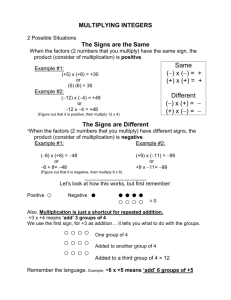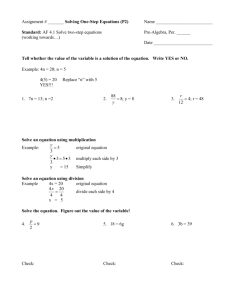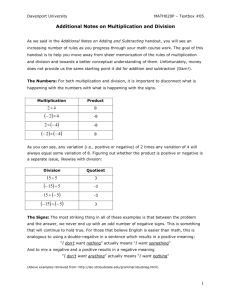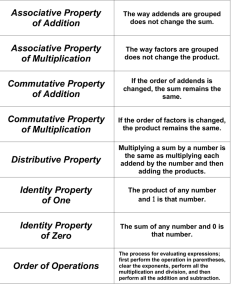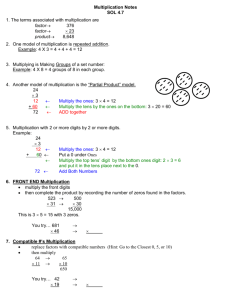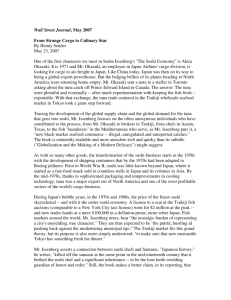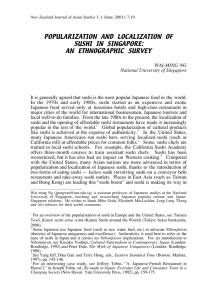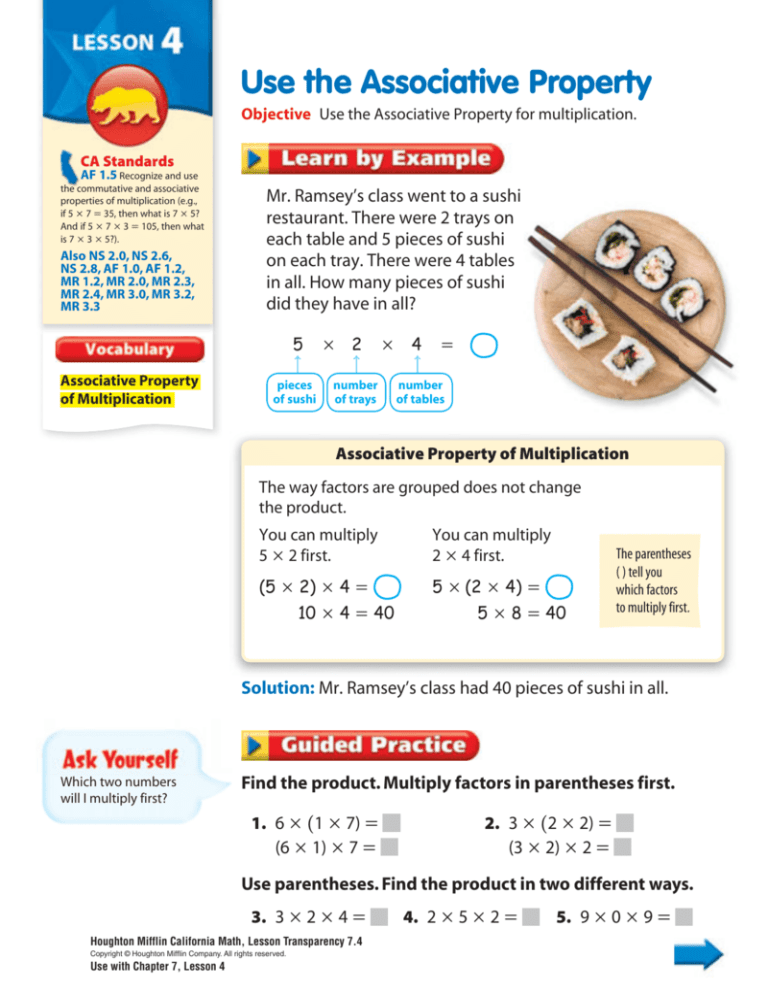
Use the Associative Property
Objective Use the Associative Property for multiplication.
CA Standards
AF 1.5 Recognize and use
the commutative and associative
properties of multiplication (e.g.,
if 5 × 7 = 35, then what is 7 × 5?
And if 5 × 7 × 3 = 105, then what
is 7 × 3 × 5?).
Also NS 2.0, NS 2.6,
NS 2.8, AF 1.0, AF 1.2,
MR 1.2, MR 2.0, MR 2.3,
MR 2.4, MR 3.0, MR 3.2,
MR 3.3
Mr. Ramsey’s class went to a sushi
restaurant. There were 2 trays on
each table and 5 pieces of sushi
on each tray. There were 4 tables
in all. How many pieces of sushi
did they have in all?
Associative Property
of Multiplication
pieces
of sushi
number
of trays
number
of tables
Associative Property of Multiplication
The way factors are grouped does not change
the product.
You can multiply
5 × 2 first.
You can multiply
2 × 4 first.
(5 × 2) × 4 =
5 × (2 × 4) =
10 × 4 = 40
5 × 8 = 40
The parentheses
( ) tell you
which factors
to multiply first.
Solution: Mr. Ramsey’s class had 40 pieces of sushi in all.
Which two numbers
will I multiply first?
Find the product. Multiply factors in parentheses first.
1. 6 × (1 × 7) =
(6 × 1) × 7 =
2. 3 × (2 × 2) =
(3 × 2) × 2 =
Use parentheses. Find the product in two different ways.
3. 3 × 2 × 4 =
Houghton Mifflin California Math, Lesson Transparency 7.4
Copyright © Houghton Mifflin Company. All rights reserved.
Use with Chapter 7, Lesson 4
4. 2 × 5 × 2 =
5. 9 × 0 × 9 =
Guided Problem Solving
Use the questions to solve this problem.
6. Five students each make 2 posters
about their city’s recycling program.
Each poster has 3 graphs. How many
graphs are there in all?
a. Understand What is the question?
b. Plan Why would you multiply to find
the answer?
c. Solve Complete the number sentence.
×
number
of students
×
number
of posters
=
number
of graphs
d. Look Back How can a picture help check?
7. Look back at Problem 6. What if there were 3 students
who each made 2 posters and each poster had 5 graphs.
Would there be the same number of graphs in all? Explain.
Math Talk
In which order would you multiply
3 × 2 × 6? Explain why.
Houghton Mifflin California Math, Lesson Transparency 7.4
Copyright © Houghton Mifflin Company. All rights reserved.
Use with Chapter 7, Lesson 4

